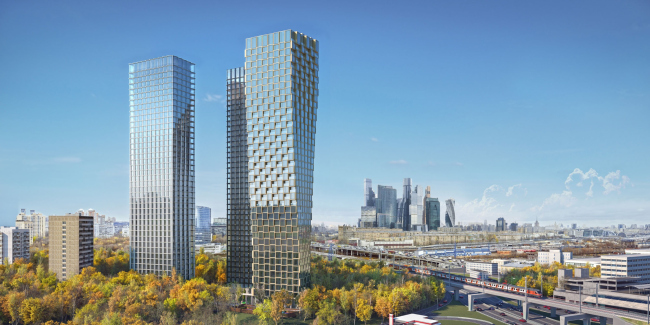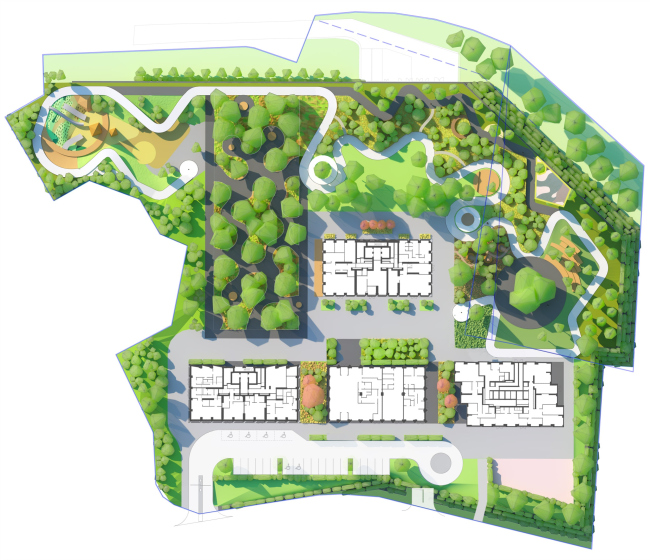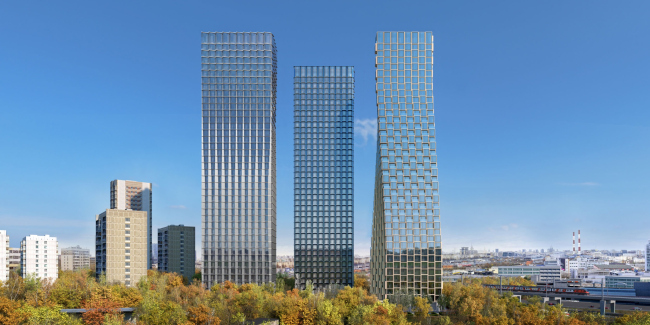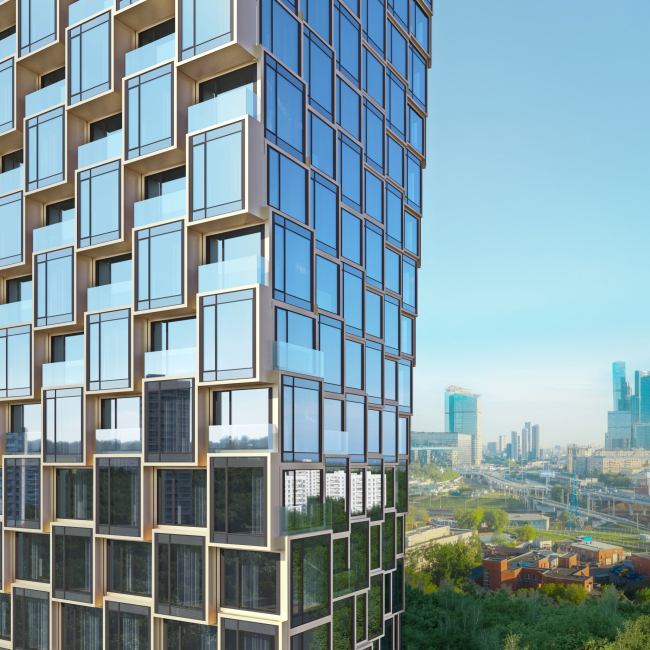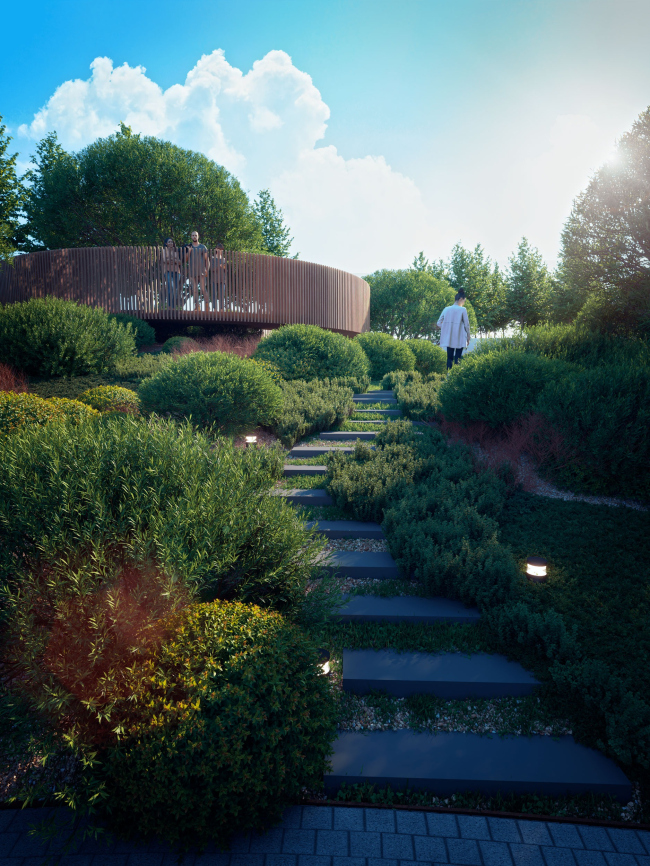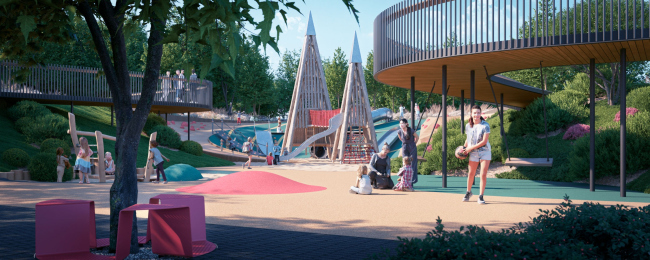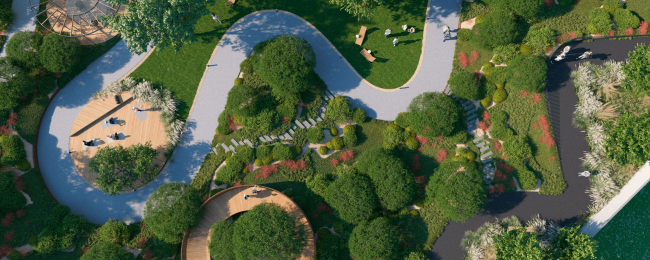|
Published on Archi.ru (https://archi.ru) |
|
| 12.01.2021 | |
|
In Three Voices |
|
|
Alla Pavlikova |
|
| Architect: | |
| Andrey Romanov | |
| Ekaterina Kuznetsova | |
| Studio: | |
| ADM | |
|
The high-rise – 41 stories high – housing complex HIDE is being built on the bank of the Setun River, near the Poklonnaya Mountain. It consists of three towers of equal height, yet interpreted in three different ways. One of the towers, the most conspicuous one looks as if it was twisted in a spiral, composed of a multitude of golden bay windows. Just a decade ago, high-rise projects in Moscow were relatively rare, the Moscow City complex being one of a kind, and there were only occasional conversations about building the “Big City” on the grounds of former industrial parks at a certain radius around it. Today, residential towers over 150 meters high are sprouting nearly in every part of the city, slowly but surely changing its skyline. 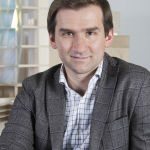 Andrey Romanov, ADM We at once decided that these will be skyscrapers. The very land site itself suggested such a solution because its main competitive advantage are the sweeping views that the apartment windows command. What turned out to be the most challenging and responsible task in this case, was the search for the architectural imagery because the towers are 150 meters high, and they are visible from numerous vantage points. This is why our main task was to make this new complex fit in with the panorama of the surrounding city. Still before the architects got down to the actual design process, they made a visual analysis of the grounds using drone footage, which showed that the future apartments will command breathtaking views. The windows gazing northwest will overlook the entire Presnya area and the already-mentioned Moscow City business center. From the east side, it will be the Berezhkovsky Bridge and the Novodevichy Monastery. The views in the southwestern direction from a height of 100-150 meters will include the green panorama of Luzhniki complex, Kosygina and Mosfilmovskaya streets, the high-rise building of the Moscow State University, the Sparrow Hills, and the picturesque bend of the Moskva River. Both the architects and the developer deemed this view to be the most valuable one, and this is why one of the two longer facades of each tower gazes southwest. HIDE Housing ComplexCopyright: © ADMThe land site is a compact spot with an overall area of about 2 hectares, a jagged contour, and a height difference about 5 meters from north to south. In the north and in the east, it borders on the Moscow Central Circle and a flyover junction of the Third Transport Ring, while its south border adjoins the 1st Setunsky Drive, from the opposite side of which the green riverbank starts. Farther east, almost coming up against HIDE, a small Soviet microdistrict begins: houses 9, 14, and 25 stories high, a large school, and a few kindergartens. The district is not really large, and is naturally curbed by the roads and the river, yet it does include an educational complex. In addition, one can notice that the construction of the towers began here a while ago – as early as in 1975 this place got a 25-story house on its western border, quite high for its time; in the late 1990’s, two more 25-story towers were built. The new housing complex is nearly twice their height, which means that in a sense it continues the town planning tradition that was started some time ago in this part of Moscow. The stylobate of HIDE includes an underground parking garage and occupied almost the entire construction blueprint, leveling out the height difference. The stylobate roof is a bit higher than the lines of the Moscow Central Circle, which puts some distance between the inner yard and the city’s transport arteries. The north and the east contours of the stylobate descend in the direction of the roads in a smooth green slope, and, if we are to look from this vantage point, the stylobate looks more like a natural mount – the idea is that the towers look as if they were sprouting from the hill and the trees, and not from some man-made construction. From the side of the drive, the stylobate stands back from the redline, leaving room for the overland parking lot for guests’ cars, a taxi alighting zone, and a small pedestrian street running along the facade of the complex. The masterplan. HIDE Housing ComplexCopyright: © ADMAs for the towers themselves, rectangular on the plan and equal in height, 41 floors each, they are positioned along the driveway: two in the contour of the city street with a two-level public tier between them. The third one stands symmetrically between them pushed into the depth of the site. This arrangement of the towers in the south part is explained by the insolation requirements of the neighboring buildings: if you move the composition just a little bit to the left or to the right, a whole city block will end up covered by a huge shadow, as Andrey Romanov explained. Besides, arranged this way, the houses are huddled in the part that is closer to the city street, with the residents-only private yard situated behind them. The public and private grounds are zoned and unobtrusively separated; the yard, rich in vegetation, also provides extra noise protection for the lower floors of the towers. HIDE Housing ComplexCopyright: © ADMUnlike the volumetric and spatial solution, the architectural image was slow to come: the architects developed a lot of versions, which included both identical and totally different towers. However, the creative search did the project a lot of good, the authors believe.  HIDE Housing ComplexCopyright: © ADM HIDE Housing ComplexCopyright: © ADMUltimately, each of the high-rises got a unique image of its own, yet within a single concept they rather complement than compete with one another. The south tower, situated closer than the other two to the Moskva River and designed, among other things, to be viewed from the water and from the Sparrow Hills, is a particular highlight. Its plan is composed of three slabs, shifted with an equal pitch. The plastique of the facades is based on the checkered alternation of bay windows, encased in frames of golden anodized aluminum, and balconies with transparent barriers. Each element is situated with a slight shift on each floor – and this way the entire volume takes on an S-shaped contour – a diagonal contrapposto – a silhouette, distantly resembling a giant figure walking towards the river. We will note here that the ledges vary from not very deep at the top and bottom to very prominent “at the waist”, creating an effect of composite and even “undulating” matter, which seemingly transforms right in front of our eyes, which is felt particularly strongly when you view the complex from different vantage points. When you look from the front, the diagonal bend folds into a curved golden “profile”. 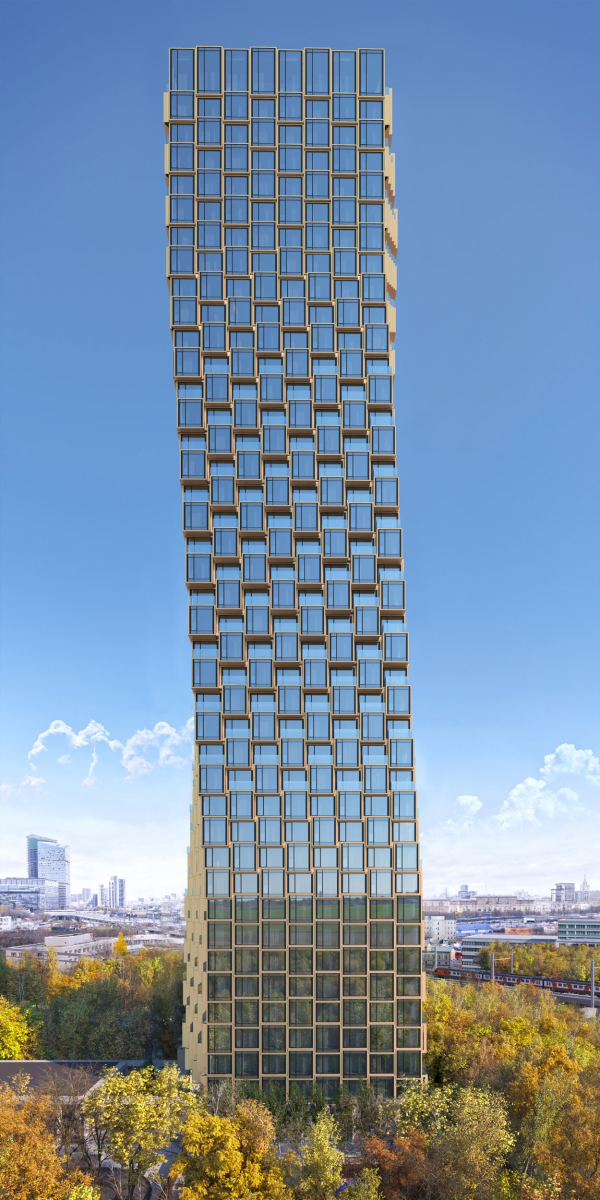 HIDE Housing ComplexCopyright: © ADM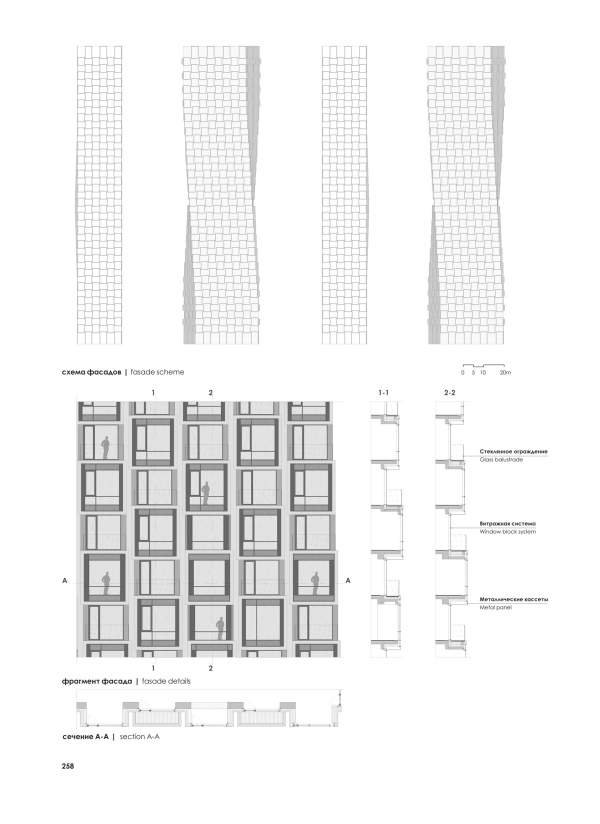 The facades. HIDE Housing ComplexCopyright: © ADMHIDE Housing ComplexCopyright: © ADMThe tower on the left gravitates towards the Setun valley, enters into a dialogue with the river. Looking to emphasize its natural character, in one of the versions the architects proposed to design its facades in red brick. Later on, however, for the sake of the integrity of the approach, the architects adopted hi-tech facades for all of the towers, based on glass and aluminum, characteristic for skyscrapers. The brick had to go – as a material but not as a texture. The volume of the tower, sturdy and robust at the bottom, looks totally weightless at the top thanks to the wide vertical “ribs”, composed of tiny aluminum cassettes, which imitate brick both in color and texture. As they climb up the glass facade, the “ribs” grow thinner, and then dissolve completely against the background of the sky, together with the glass “crown” of the top of the skyscraper. 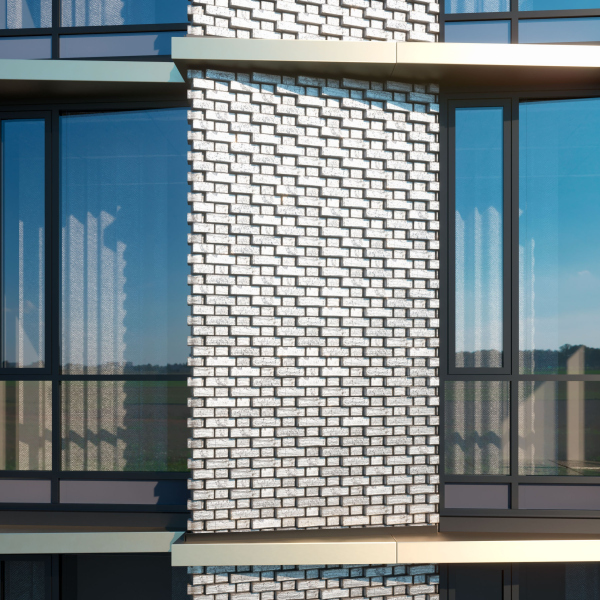 HIDE Housing ComplexCopyright: © ADM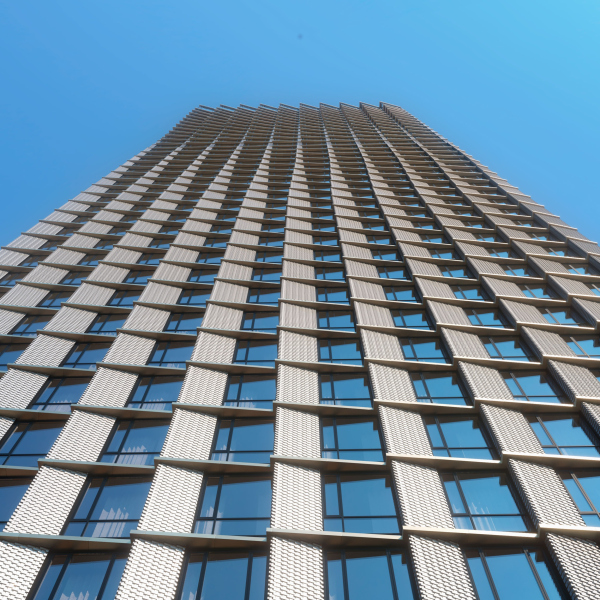 HIDE Housing ComplexCopyright: © ADMThe central tower is the most material, robust, and static. It emphasizes its status with the grid of the cellular facade and its clear structure. Here the architects made the most out of the contrast, thus attracting as much attention as possible to the volume that has been moved into the background. Probably, this is the reason for its dark color. While in the case of the two other high-rises the golden and silver aluminum details merely complement the image, creating accents, here the metal dominates. The tower is all glass but all of the stained glass windows frames are made from dark metal. The window apertures are framed by aluminum frames of a rich bronze hue. The piers between them are pitch-black. And they look darker still due to their concave shape. 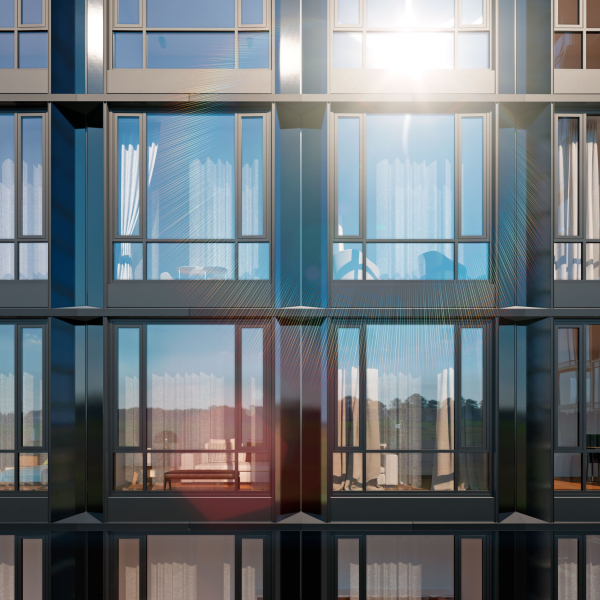 HIDE Housing ComplexCopyright: © ADM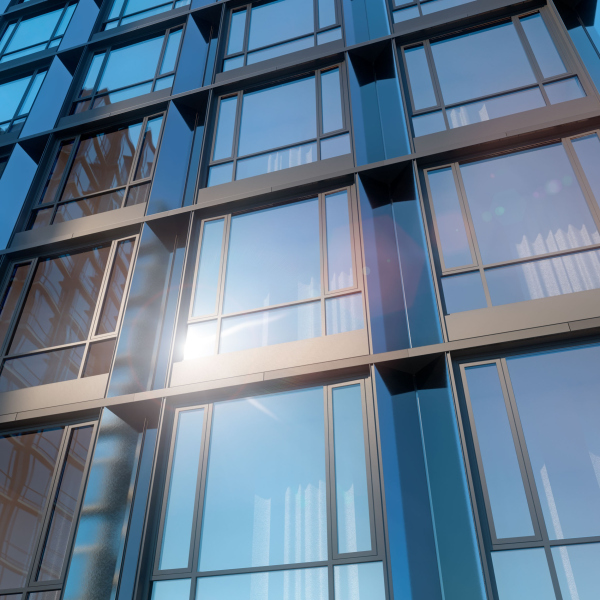 HIDE Housing ComplexCopyright: © ADMThe architects emphasized the combination of different textures. Using for the facades of the towers only two active materials, they achieve a stunning diversity. You can see here lots of shades of color – golden, silver, brass, bronze, pitch-black – and an abundance of textures – from satin to high gloss – as well as various kinds of architectural stylistic devices, such as niches, ledges, and volumetric patterns. At the same time, this whole diversity of details virtually disappears in the upper floors, giving way to fine facets of glass and a small “attic” of penthouses, whose ceiling height is 5.2 meters, as opposed to the 3.5 meters in all the other stories. 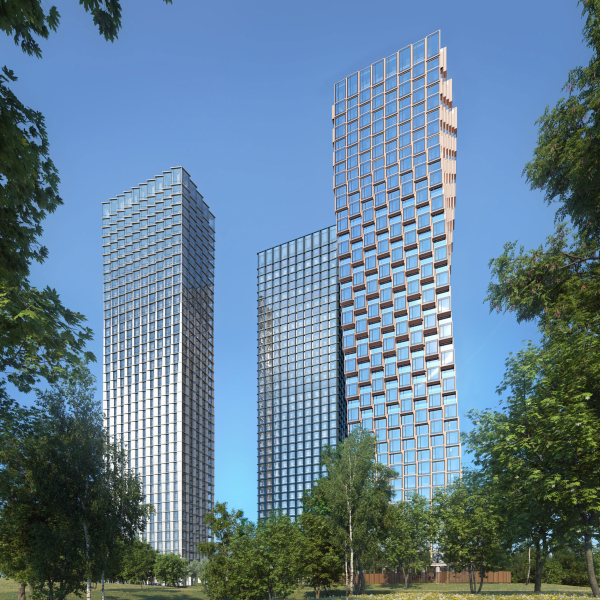 HIDE Housing ComplexCopyright: © ADM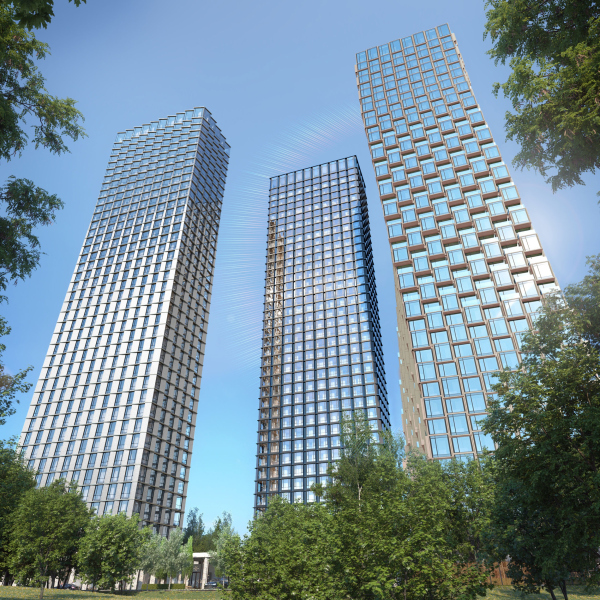 HIDE Housing ComplexCopyright: © ADMThe range of apartments is rather diverse – from studios to four-room apartments and penthouses on the 41st floor. The windows are panoramic, reaching down to the floor. The two-story entrance unit includes a central hall, a concierge service, lounges, cafes, and a restaurant with an outdoor terrace in front of the complex. In addition, it is planned that the bottom floors will include a supermarket, a bakery, a drugstore, a beauty salon, a fitness center, a preschool educational center, a co-working space, and meeting rooms. This way, the developer is planning to implement the trendy “vertical city” idea, when everything necessary for life and work is available within one building. The central hall exits to the residents-only grounds of the complex, where ADM architects designed a veritable landscape park. For all the expressiveness of the facades, this park can be arguably considered to be one of the key advantages of the project. The park territory borrowed a lot of traits from the natural landscape – probably, due to the proximity to the Setun River – yet, at the same time, it has the orderly nature and the harmony of the traditional English park. HIDE Housing ComplexCopyright: © ADMHIDE Housing ComplexCopyright: © ADMThe yard, just as the entire architectural ensemble, rests on top of the stylobate and is visually raised above the carriageway of the Third Transport Ring. The place includes a large rectangular park, a “secret garden” with gazebos designed for solitary recreation, green lawns, yoga spots, a workout area, and an amphitheater with a view of a spreading oak, which is planned to be planted already perennial. 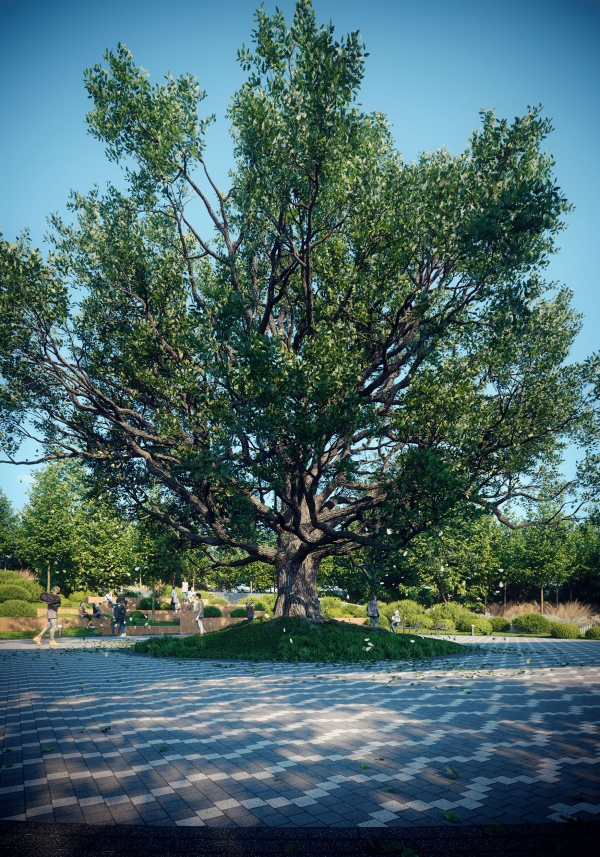 HIDE Housing ComplexCopyright: © ADM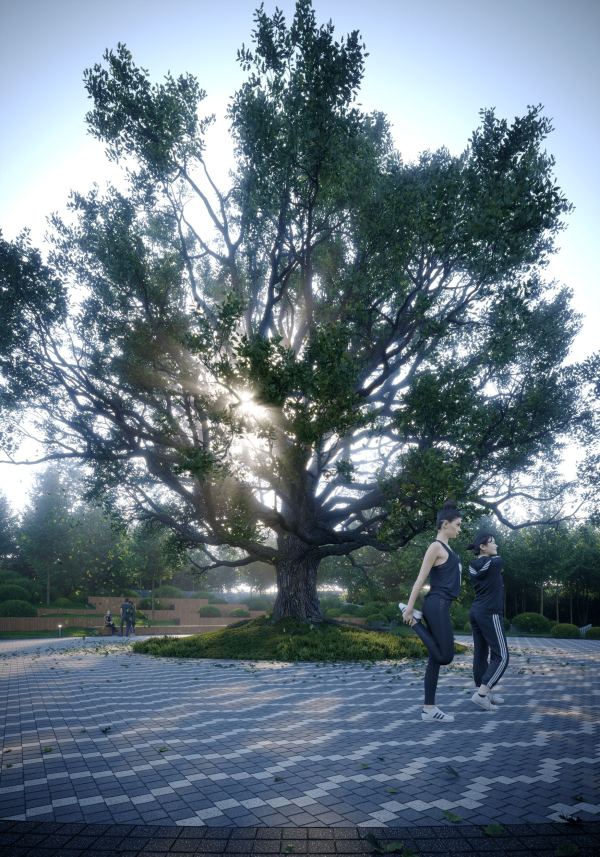 HIDE Housing ComplexCopyright: © ADM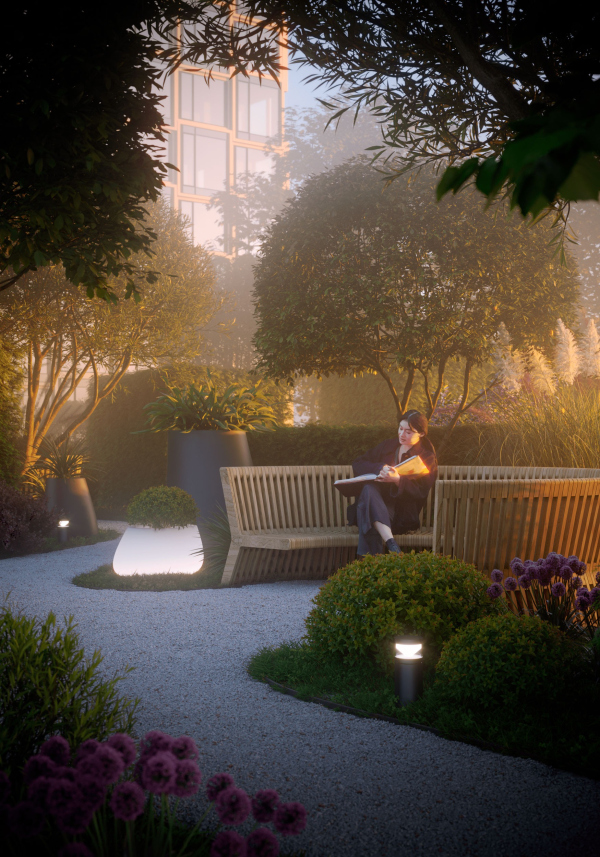 Secret garden. HIDE Housing ComplexCopyright: © ADM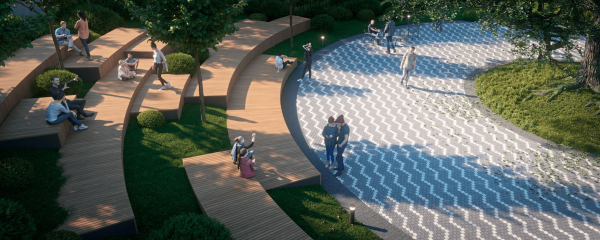 The Amphitheater. HIDE Housing ComplexCopyright: © ADMThe whole territory is stitched with wide pedestrian roads. In the northernmost spot, there is a playground. The artificial green hills surround it from all sides, forming something like a shallow crater or a canyon, safely protected from the wind. The walking paths do not cross over to the playground but hand above it in beautiful loops of the bridges. The playground. HIDE Housing ComplexCopyright: © ADMTop view. HIDE Housing ComplexCopyright: © ADMSurprisingly, the architects were able to find room for all of the elements of a modern park in this comparatively small land site. These are walking trails, sports facilities, playgrounds, quiet secluded corners for work and recreation, and, of course, lots of various green plants. There is also a bicycle trail – you can start your bicycle ride directly from the yard, exiting to the embankments of the Moskva River. The pedestrian road. HIDE Housing ComplexCopyright: © ADMThe construction of HIDE is already underway. And, judging by the project, it must become a prominent member in the family of the residential skyscrapers that are changing Moscow’s skyline. We will note that such towers are the ultra-modern type of housing designed for high quality of execution and for panoramic views from up high, from where Moscow is perceived in a fundamentally different way, like some impressive grand-scale singularity. We will repeat here that until recently such “Manhattan” type of housing was almost the sole prerogative of the Moscow City – and now the city is actively developing new projects of high-rise towers, each of which is looking to create a special and memorable image – because the high-rise status obliges to have a form that has been carefully molded. However, what makes the new residential towers (Hide being one of them) different from Moscow City (where nobody really cared about landscaping the territory for a long time) is the careful attention to the public outdoor space. Due to the significant number of floors, the houses can afford, stretching up, not to occupy the entire land site, but to allocate the maximum area in the lower tier to create a courtyard, or even a mini-park. Thus, the towers combine a subtly designed diverse shape and highly developed infrastructure that will work, among other things, for the city – and the ability to live at a bird’s eye view. |
|
